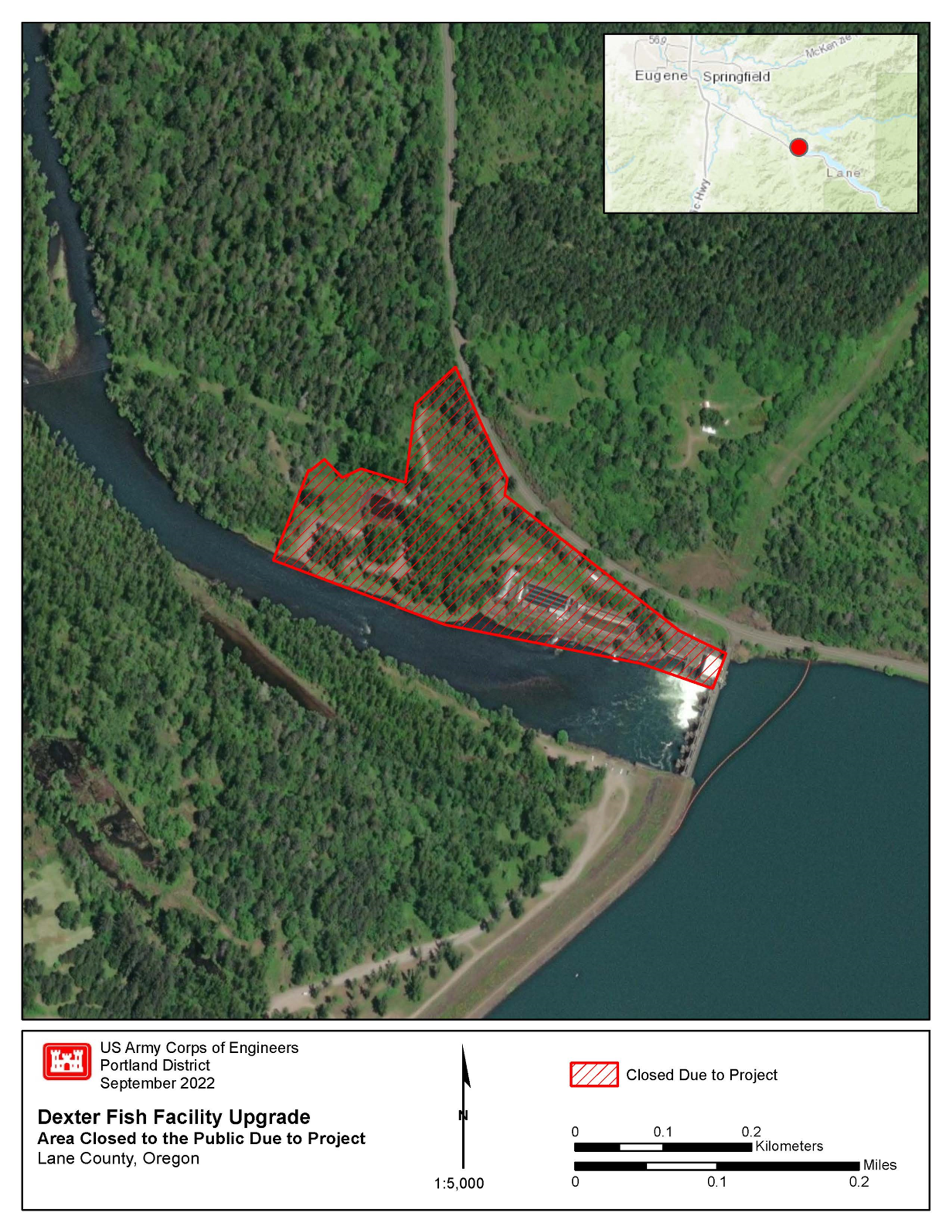
Project Description: The U.S. Army Corps of Engineers (Corps), Portland District is upgrading the Dexter Fish Facility to improve adult fish collection, handling, and transportation for the benefit of salmon, steelhead, and trout. A new ladder design will accommodate passage of adult Lamprey as well. The Corps is preparing an environmental assessment (EA) under the National Environmental Policy Act (NEPA) because the proposed project may affect the quality of the human environment.
Project Details: The Dexter Fish Facility is located immediately downstream of Dexter Dam on the north bank of the Middle Fork Willamette River. The facility sits on approximately 13 acres at river mile 18 near the city of Lowell in Lane County, Oregon. Portland District is rebuilding the fish facility, adding major new features, and expanding the project beyond the current footprint. The work will also include some minor maintenance work at the base of Dexter Dam in the reservoir. The project area will include staging extending to the existing USACE-owned Middle Fork Boat Ramp, a public boat ramp downstream of the facility. The existing fish collection facility is currently operable and will be used to maintain uninterrupted upstream fish passage during construction. The upgraded facility will include the following major feature improvements.
- Fish Ladder and auxiliary water supply diffusion chamber
- Pre-Sort Pool
- Fish sorting area and sort structure
- Post-Sort Pool and shade structure
- Truck loading and transport
- Water supply piping
- Fish return to river pipe
- Maintenance building
- Mechanical/Electrical building
- Access bridge
- Forebay intake juvenile screens
The new facility design incorporates National Marine Fishery Services’ Anadromous Salmonid Passage Facility Design and the best available technology. The major design benefits include:
- Minimizing 90 degree turns to benefit fish movement through the ladder by maintaining hydraulic traction and minimizing delay and possible injury.
- Utilizes portions of the original facility but with modern fish collection, sorting, and truck transport features.
- Minimizes handling stress to ensure fish introduced above dams survive to spawn.
- Improves the collection, sorting and transportation of Upper Willamette River (UWR) Chinook, summer steelhead, Pacific Lamprey and resident fish.
- Increases the pre-sort pool length to 125 feet and holds 1500 fish at 55 degrees.
- A new layout with two additional switch gates so fish can go directly to a pond and bypass the current design of the one entry into the anesthetic tank.
- A larger hopper so the post sort pools can be emptied with two hopper loads.
Project Impacts: The Middle Fork Boat Launch Area will be used as a construction staging site, so the launch will be closed beginning September 11, 2023 through early Summer 2026.
What is NEPA? The National Environmental Policy Act (NEPA) requires federal agencies to consider environmental impacts of their actions in decision making. It is important to emphasize that a Federal decision cannot be made until after the environmental review process is complete. Federal agencies’ analyses are published in a Draft EA for public review and comment. Once the public’s comments have been reviewed, federal agencies prepare a Final EA.
Per NEPA, an EA assessing impacts of the proposed project on the quality of the human environment will be provided to the public for review and comment. The public will be notified when opportunities for comment arise. The Citizen's Guide to NEPA explains this law and how to effectively submit your input.